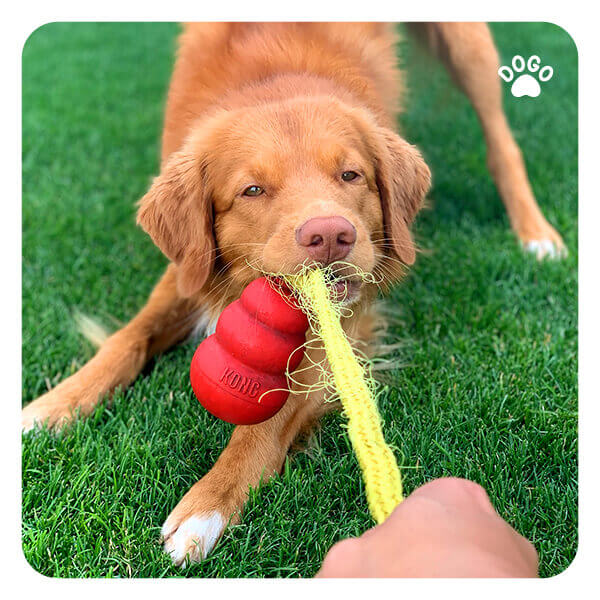How To Start A Dog Walking Business?
Post Date:
December 10, 2024
(Date Last Modified: November 13, 2025)
Starting a dog walking business begins with understanding the local market and defining who will pay for and use your services.
Market research & niche selection
Begin by mapping the immediate neighborhood where you plan to operate and note concentrations of likely clients; a practical field radius is 1 mile (1.6 km) from your base to estimate reachable households and walking time per route[1]. Use door-to-door canvassing, short online surveys, or observation to sample the area; aim to contact at least 50 nearby homes to get a basic sense of demand and common needs[1]. When documenting competitors, count direct dog-walking services and related providers (pet sitters, daycare) within that same radius and list at least 3 to 5 businesses to compare service menus and pricing[1].
Choosing a niche narrows marketing and clarifies operations; consider focusing on one or two target segments such as puppy socialization, elderly or mobility-impaired dogs, breed-specific handling, or neighborhood-only routes. A simple rule of thumb is to prototype one focused package first and limit offerings to 2 to 3 core services until you can reliably deliver them at scale[1]. For example, test a 30-minute neighborhood walk package and measure client uptake for 30 to 60 days before adding more options[1].
Identifying pricing tolerance and service gaps requires direct feedback and local price comparisons; collect price points from at least 10 local competitors or listings to triangulate a sensible starting range and to find services customers report as missing[1]. Note patterns such as frequent requests for weekend availability or short-notice visits; these can reveal higher-margin add-ons you might test for 30 to 90 days to validate demand before formalizing them into packages[1].
Business model & service offerings
Decide which specific services you will sell and how you will package them into easy-to-understand options; many new operators start with three core durations—15, 30, and 60 minutes—and add one or two add-ons such as drop-in visits or basic training reinforcements[1]. Choose whether to sell visits a la carte or as subscriptions; a common launch approach is to offer both per-visit rates and a weekly subscription that bills for 4 or 5 walks per week to lock in recurring revenue[1]. Define peak and off-peak pricing clearly, for example charging 10% to 20% more for early morning or evening peak windows, and plan seasonal rate adjustments for holidays or high-demand months[1].
Structure revenue streams beyond walks by identifying at least two supplementary income sources such as pet sitting, holiday house checks, or retail items like branded leashes and waste-bag subscriptions; pilot each add-on for 30 to 90 days before making it a permanent offering[1]. Build simple packages that combine a set number of walks with a small discount to encourage prepayment and reduce churn; a typical bundling tactic is offering the equivalent of one free walk for every 8 pre-paid walks[1].
Legal structure, licensing & insurance
Choose a business structure that fits your risk tolerance and tax needs; many solo operators start as sole proprietors and later form a single-member LLC to separate personal assets from business liabilities[1]. Register your business name with local authorities and obtain any required city or county permits for animal services; check with municipal offices about animal-related regulations before advertising publicly[1].
Purchase liability insurance and, where appropriate, bonding to cover employee dishonesty and client property damage; policies typically have limits such as $1,000,000 in general liability coverage for small animal businesses, which is a common starting point to protect against claims[1]. Maintain written service agreements that state cancellation windows (for example, 24 to 48 hours for no-charge rescheduling) and client responsibilities such as up-to-date vaccinations and secure exits from the home[1].
Pricing strategy & financial planning
Calculate all direct and indirect costs before setting prices by including labor time, travel, equipment replacement, and business overhead; a basic per-walk cost model often starts by tallying minutes per visit (including transit) and allocating a per-minute rate to reach a target hourly equivalent you need to earn[1]. Aim for gross margins in the range appropriate for service businesses and use simple price tiers that reflect walk duration and add-ons such as GPS tracking or photo updates[1].
| Walk length | Base price | Estimated cost | Suggested margin |
|---|---|---|---|
| 15 min | $12 | $6 | 50% |
| 30 min | $20 | $10 | 50% |
| 60 min | $35 | $17 | 51% |
Set up simple bookkeeping and invoicing from day one and create a basic cash flow forecast that covers at least 3 months of operating expenses; projecting weekly cash inflows and outflows helps you identify shortfalls and plan for tax obligations correctly[1]. Decide on invoicing frequency—weekly or monthly—and standardize payment terms such as net 7 or due on receipt to keep receivables small[1].
Operations, scheduling & territory management
Create daily routes that limit total walking time and transit to preserve margins; many operators cap individual routes to 6 to 8 walks per route to maintain punctuality and reduce rushed handling between visits[1]. Use scheduling tools or calendars to block travel buffers of 5 to 10 minutes between appointments and build a simple cancellation policy that specifies fees or rescheduling windows[1].
Define clear service territories and publish a travel-fee policy for clients outside your mapped radius; common practice is to set a base radius such as 1 mile (1.6 km) and charge a flat travel fee for locations beyond that boundary[1]. Establish backup procedures and at least one substitute walker for emergency coverage to avoid missed visits, aiming for at least one trained backup per neighborhood when volume exceeds a small threshold[1].
Equipment, safety & canine care protocols
Stock essential gear including two reliable leashes per walker, disposable waste bags, portable water, and a compact first-aid kit; replace consumables such as waste bags weekly and inspect leashes and harnesses monthly for wear[1]. Implement a simple health-check routine to assess dogs each visit—listen for coughing, check gait, and verify identification tags—and cancel or escalate care if you observe acute distress[1].
Have written restraint and emergency response protocols that specify when to carry a muzzling device, when to call a veterinarian, and how to transport an injured animal; train staff to follow the plan and document drills quarterly as part of quality assurance[1]. Define hygiene procedures including hand-washing between visits, disinfecting shared equipment weekly, and managing contagious conditions by temporarily suspending service for symptomatic animals until cleared by a veterinarian[1].
Client acquisition & marketing tactics
Target marketing to the neighborhoods you serve with localized tactics such as door-hanger flyers, partnerships with a small number of allied local businesses, and participation on community boards; commit to at least one offline and one online channel in the first 60 days and measure leads by source[1]. Build a modest website with clear service pages and local SEO elements like neighborhood names and “dog walker near me” terms, and claim business listings on major platforms to increase discoverability[1].
Encourage referrals by offering a small credit or free walk for both referrer and new client and actively request reviews after a first month of service; track conversion rates from referrals and reviews to understand what drives sustainable growth[1].
Client onboarding, contracts & record-keeping
Use intake forms that collect vaccination records, emergency contact information, and behavioral notes; require proof of core vaccinations and keep electronic copies on file for each client with updates at least annually[1]. Provide and sign a service agreement that details cancellation terms, liability limits, and consent for care in emergencies, and store signed copies for the length of client engagement plus a recommended retention period such as 3 years[1].
Maintain clear pet profiles and walk notes for each visit to ensure continuity of care and to support quality checks; keep invoicing records and simple accounting ledgers current and reconcile accounts at least monthly to prepare for tax filings[1].
Customer service & retention
Set communication standards that include at-minimum trip confirmations and a brief visit update with a photo or note for every walk; define response-time targets such as replying to client messages within 24 hours on business days[1]. Use loyalty mechanics like periodic discounts for long-term clients or bundled credits to encourage rebooking, and schedule proactive outreach campaigns seasonally to re-engage dormant accounts[1].
Have documented procedures for handling complaints and refunds that prioritize swift resolution; aim to acknowledge client concerns within 24 hours and provide a clear timeline for remediation or refund decisions[1].
Scaling, hiring & systems for growth
Decide early whether to hire employees or engage contractors; many operators begin with contractors and shift to employees when payroll and quality control needs justify the change, often tracking metrics such as client-to-walker ratios and repeat-booking rates to guide the decision[1]. Create standardized onboarding checklists, role-specific training modules, and regular quality audits—plan for at least one formal check in the first 30 days of a new hire and monthly reviews afterward[1].
Define growth metrics such as monthly recurring revenue, client churn rate, and average revenue per client to determine when to replicate territory operations or pursue partnerships with larger providers; monitor these metrics weekly or monthly depending on activity level[1].
Sources
- sba.gov — Small Business Administration






